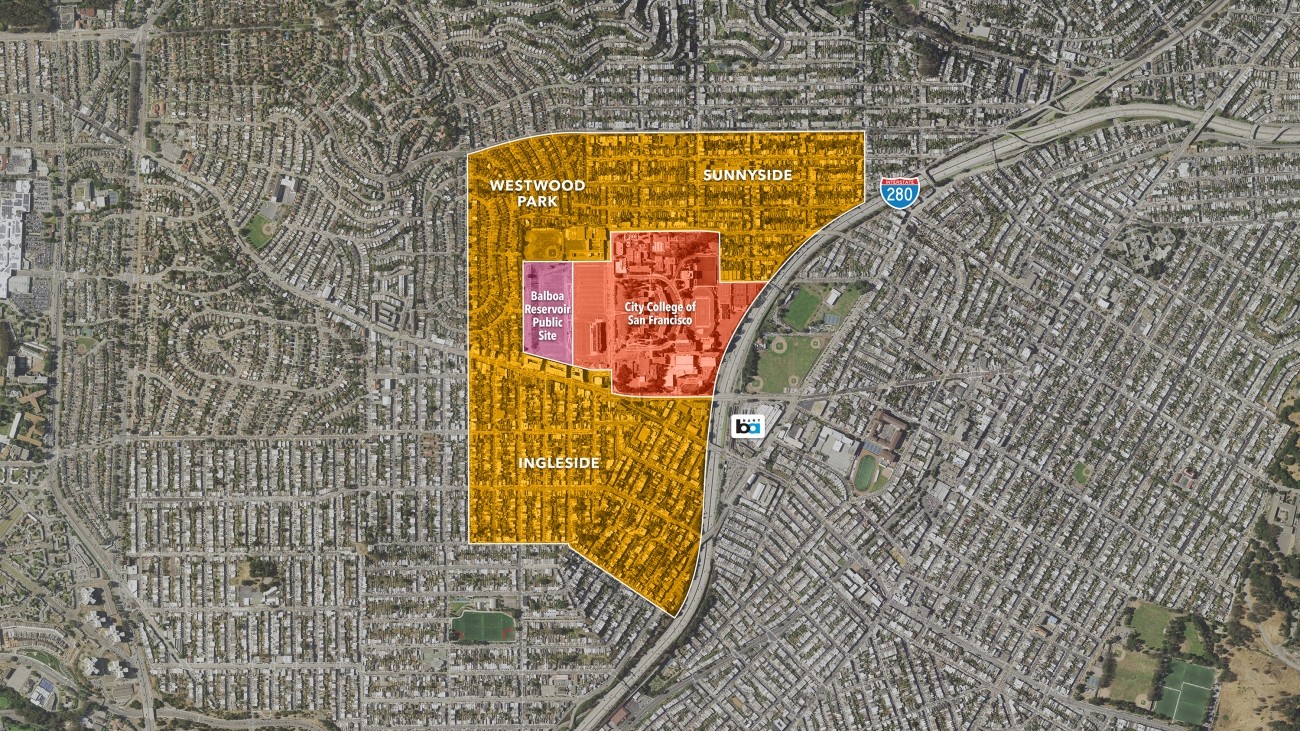
Photo: SFMTA Photography Department
Introduction
The Balboa Area Transportation Demand Management Framework process was designed to initiate collaboration between the City, City College of San Francisco, and surrounding neighborhoods in the effort to encourage sustainable transportation choices in the area.
The framework, released in January 2018, provides specific recommendations to encourage sustainable travel choices, make efficient use of limited transportation infrastructure, and make it easier for Balboa Area residents, employees, visitors, and students to get around.
Project Area
Project/Study Partners
SF Planning, SFMTA, City College of San Francisco, San Francisco County Transportation Authority, SF Environment, San Francisco Office of Economic and Workforce Development, Balboa Reservoir Community Advisory Committee, Balboa Park BART Station Citizens Advisory Committee members, and members of the Balboa Park community.
Goals
- Reduce vehicle-miles traveled
- Reduce auto trips
- Reduce traffic congestion
- Reduce transportation costs to preserve housing affordability
Cost & Funding
The project was funded by the Transportation Authority's Neighborhood Program and the Proposition K local transportation sales tax, at the request of Supervisor Yee's office, to consider a more effective approach to Transportation Demand Management, given current and future changes in travel due to population and employment growth in the Balboa Area.
Resources
Final Report: Balboa Area Transportation Demand Framework, 2017 (PDF)
SFMTA webpage: Balboa Area Transportation Demand Management Framework
Prop K Transportation Sales Tax Funding Request (PDF)
Contact
The Balboa neighborhood is an area located in south central San Francisco that includes the Balboa Park BART station, City College of San Francisco Ocean campus, the Balboa Reservoir, and a commercial corridor along Ocean Avenue.
Past planning efforts for the Balboa area include SF Planning's Balboa Park Station Area Plan, adopted in 2009, and the City College of San Francisco Master Plan, adopted in 2004. Both plans aim to enhance the area's transit performance, public realm, land use pattern, and economic vitality. They also encourage more intensive development, calling for the establishment of new programs to reduce undesirable transportation impacts often generated by growth; namely single-occupancy vehicle trips.
A number of the Balboa Park Station Plan Area improvements are steadily enhancing transit access, transit operations, and pedestrian access and safety around Balboa Park BART station. Still, as the neighborhood grows, City College enrollment increases, and travel patterns change, there is a need to better manage the transportation demand for City College and surrounding neighborhoods to work with limited roadway, transit infrastructure, and financial resources.
The Balboa Area Transportation Demand Management Framework was proposed as a response to this need and to public input provided to the Balboa Park Station Community Advisory Committee, the Balboa Reservoir Citizens Advisory Committee, and at public workshops in the neighborhood.
What is Transportation Demand Management?
Transportation Demand Management, or TDM, is a general term for policies, incentives, and programs that help make the best use of limited roadway and transportation resources. By providing residents, employees, students, and visitors with safe and sustainable transportation options, TDM measures can reduce single-occupant vehicle trips, reduce peak-hour congestion, and enhance neighborhood livability. Measures can include:
- Subsidized transit passes
- Bike share and/or car share
- Safe bicycle parking
- Market-rate parking fees
- Wayfinding signage
- Last-mile shuttle service to and from transit hubs
- Real-time transportation information displays
- Land use planning that reduces the need for travel
From April 2016 through May 2017, SF Planning and SFMTA led outreach and coordination efforts with the Balboa Park Station Community Advisory Committee, the Balboa Reservoir Community Advisory Committee, City College Board of Trustees and facilities planners, and neighborhood organizations. Many of the recommendations are in response to TDM-related input to the Balboa Reservoir process, City College Facilities Master Planning, and the San Francisco TDM program.



